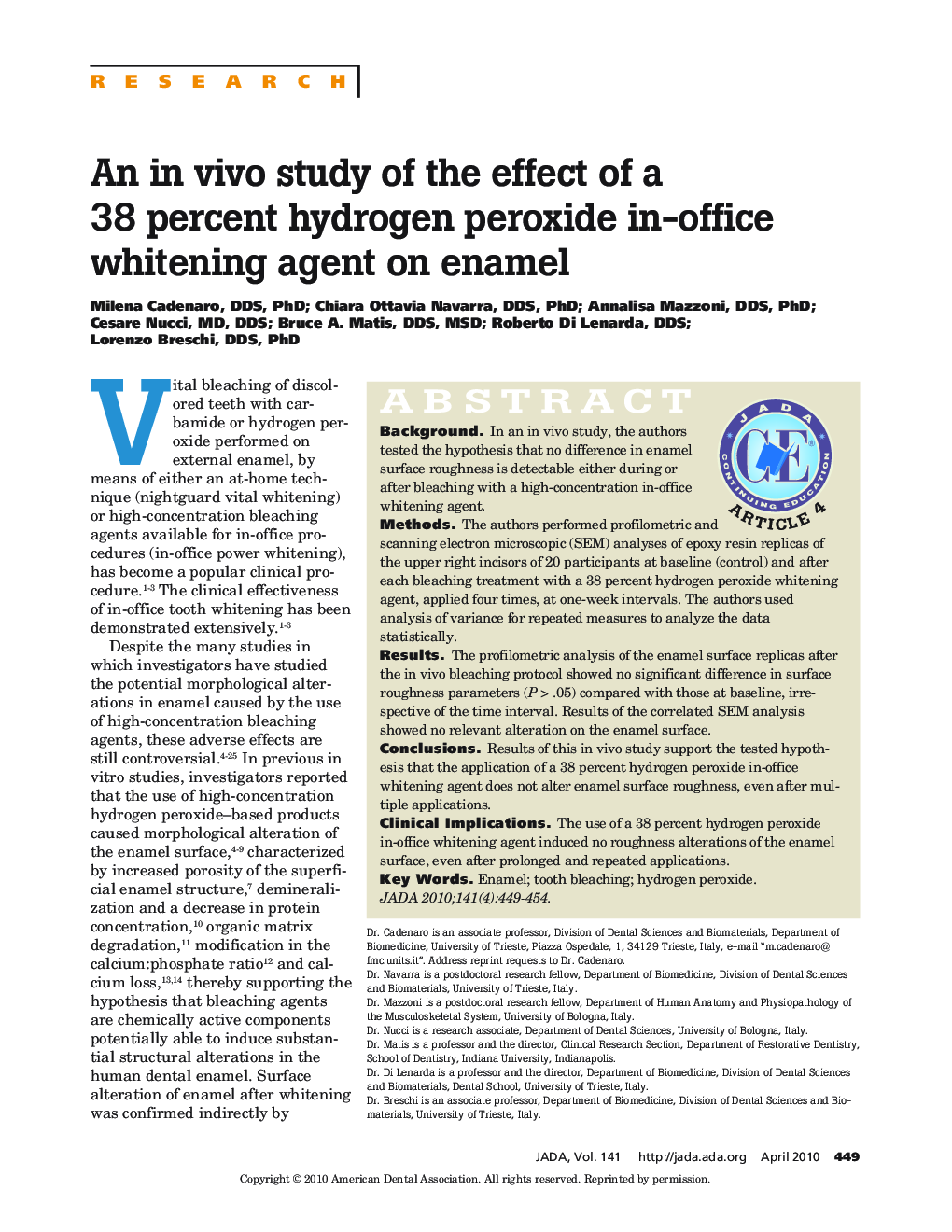| Article ID | Journal | Published Year | Pages | File Type |
|---|---|---|---|---|
| 3138704 | The Journal of the American Dental Association | 2010 | 6 Pages |
ABSTRACT BackgroundIn an in vivo study, the authors tested the hypothesis that no difference in enamel surface roughness is detectable either during or after bleaching with a high-concentration in-office whitening agent.MethodsThe authors performed profilometric and scanning electron microscopic (SEM) analyses of epoxy resin replicas of the upper right incisors of 20 participants at baseline (control) and after each bleaching treatment with a 38 percent hydrogen peroxide whitening agent, applied four times, at one-week intervals. The authors used analysis of variance for repeated measures to analyze the data statistically.ResultsThe profilometric analysis of the enamel surface replicas after the in vivo bleaching protocol showed no significant difference in surface roughness parameters (P > .05) compared with those at baseline, irrespective of the time interval. Results of the correlated SEM analysis showed no relevant alteration on the enamel surface.ConclusionsResults of this in vivo study support the tested hypothesis that the application of a 38 percent hydrogen peroxide in-office whitening agent does not alter enamel surface roughness, even after multiple applications.Clinical ImplicationsThe use of a 38 percent hydrogen peroxide in-office whitening agent induced no roughness alterations of the enamel surface, even after prolonged and repeated applications.
